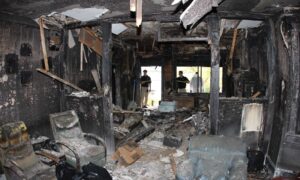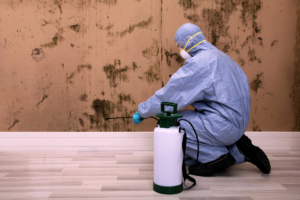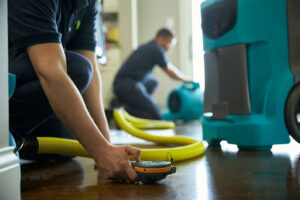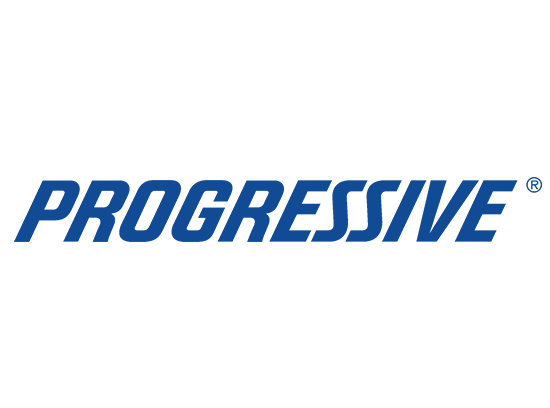Water damage can be devastating for any property, causing long-term problems that are difficult and expensive to repair. It’s essential to determine the extent of the damage to understand the required steps for restoration. One of the primary concerns that most property owners have when dealing with water damage is identifying whether it is permanent or not. How do you know if water damage is permanent?
In this section, we will discuss the key signs that can help you assess whether water damage is irreversible. Understanding these indicators will aid you in determining the extent of the damage and the necessary steps for restoration.
Key Takeaways:
- Assessing water damage is necessary to determine the extent of the damage and the necessary steps for restoration.
- Identifying whether water damage is permanent or not requires the recognition of key signs.
- Key signs of permanent water damage include visible mold growth, structural problems, odor and stains, warped or buckled floors, and electrical and appliance issues.
- Taking appropriate action is necessary to mitigate further damage and ensure effective restoration while seeking professional assistance for significant water damage.
Common Causes of Water Damage
Water damage can occur in any property, regardless of its age or location. Understanding the common causes of water damage is crucial in recognizing the signs and taking quick action. Here are some of the most frequent causes of water damage:
| Cause | Description |
|---|---|
| Burst Pipes | Water pipes can burst due to freezing temperatures, high pressure, or age. |
| Roof Leaks | Roof leaks can be caused by damaged shingles, clogged gutters, or extreme weather. |
| Foundation Issues | Foundation cracks or deterioration can allow water to infiltrate the property. |
| Appliance Malfunctions | Malfunctioning dishwashers, washing machines, and other appliances can cause leakage or flooding. |
| Clogged Drains | Clogged drains can cause water backups and flooding in the property. |
In addition to these common causes, natural disasters such as flooding, hurricanes, and severe storms can also lead to water damage. Whatever the cause may be, it’s important to address water damage immediately to prevent further harm to your property.
It’s worth noting that certain types of water damage can be covered by insurance policies, depending on the cause. Review your policy and contact your insurance provider to determine the extent of your coverage.
Visible Mold Growth
If you notice visible mold growth in your property, it could be a clear sign of permanent water damage. Mold thrives in damp environments, and the presence of mold suggests that water has been present for an extended period, leading to irreversible harm.
In fact, according to the Environmental Protection Agency (EPA), if you can see or smell mold, it’s likely that it’s already caused significant damage to the structure of your home or business.
It’s essential to address visible mold growth promptly to prevent further harm to your property and potential health hazards to individuals exposed to the mold. In many cases, professional mold remediation services may be necessary to properly assess and mitigate the harm caused by mold growth.
| Why is visible mold growth a sign of permanent water damage? | What are the potential health hazards of mold growth? |
|---|---|
| Mold requires water to grow, and it typically thrives in damp, dark environments. | Mold exposure can cause a range of symptoms, including respiratory issues, allergic reactions, and skin irritation. Individuals with compromised immune systems or existing respiratory conditions may be particularly vulnerable to the effects of mold exposure. |
| Visible mold growth suggests that water has been present for an extended period, leading to structural damage that could be irreversible. | In extreme cases, exposure to certain types of mold can cause severe health issues, including neurological problems and even death. |
| Professional remediation services may be necessary to assess the extent of the harm caused by mold growth and prevent further damage to your home or business. | Exposure to mold is a significant health concern, and it’s important to address any visible growth promptly to avoid potential health hazards. |
It’s crucial to identify and address the root cause of the water damage to prevent mold growth and other long-term consequences.
Structural Integrity Issues
When it comes to water damage, structural integrity issues can be a clear indication of permanent damage. Water weakens the structure of a building and, if left untreated, can lead to long-term consequences that can be both costly and hazardous. Signs of structural damage to look out for include:
| Signs of Structural Damage | Description |
|---|---|
| Sagging Ceilings | Water damage due to a leaky roof, burst pipes, or other sources can cause ceilings to sag or appear uneven. |
| Cracked Walls | Water can seep into walls and cause cracks, which can weaken the structure of a building and eventually lead to irreversible damage. |
| Weakened Foundations | Water can erode soil and weaken the foundation, causing shifts and cracks in the building’s structure. |
If you notice any of these signs, it’s crucial to act quickly to address the damage before it becomes more severe. Depending on the extent of the damage, you may need to consult with a professional to ensure proper restoration and repair. Remember, ignoring signs of permanent water damage can lead to costly repairs and compromise the safety and security of your property.
Odor and Stains
When it comes to water damage, unpleasant odors and unsightly stains may linger long after the initial event. These can be indications of persistent and permanent damage caused by water. You may notice a musty smell that won’t go away, or brownish discoloration on walls or ceilings. These can be signs of slow, ongoing leaks that have caused damage over time.
Another issue when it comes to water damage is that it can often be accompanied by mold growth. This can cause strong, pungent odors and visible staining. It’s recommended that you hire a professional service to carry out mold remediation to properly remove all traces of mold and address any underlying water damage issues.
Aside from the visual and olfactory concerns, stains and dampness can be persistent and problematic. They can indicate more significant water damage to the structure of the property, or even electrical damage if left unaddressed.
If you are dealing with stains and odors caused by water damage, it is important to take prompt action to remediate the issue. A professional water damage restoration company can help remove stains and odors, as well as address any underlying damage that may have caused them. This should help ensure long-term relief from these persistent indicators of water damage.
Warped or Buckled Floors
When water seeps into your subflooring or underlayment, it can cause your floors to swell or warp, creating buckling or undulating that is tough to repair. This can lead to extensive damage and even pose a safety risk to those walking on the affected floors. Additionally, water damage under your floors can attract pests, cause mold growth, and pose health hazards to you and your family.
The extent of the damage caused by warped or buckled floors can be challenging to determine. However, some indicators can help you assess the severity of the problem. These include:
- Visible unevenness or buckling in your floors
- Creaking or movement in the planks when you walk on them
- Bowed walls or door frames
- Discoloration or staining on your floors
| Causes of Warped or Buckled Floors: | How to Address Warped or Buckled Floors: |
|---|---|
|
|
Remember that warped or buckled floors can be a sign of permanent water damage. It’s essential to address any significant issues promptly to prevent further damage and ensure the safety of your home. Seek help from professionals experienced in water damage repair if you’re unsure about the extent of the damage or how to fix your floors.
Electrical and Appliance Issues
When water damage occurs, it can cause significant harm to electrical systems and appliances throughout your property, leading to potential safety hazards. Water and electricity do not mix, and it’s crucial that any electrical problems are addressed as quickly as possible to avoid further damage and risk to human life.
Signs of electrical complications due to water damage may include power outages, short circuits, sparks, and electrocution hazards. Damaged appliances and equipment may stop working altogether or act erratically, posing a serious risk to users.
If you suspect any electrical issues or appliance malfunctions due to water damage, it’s vital to seek professional assistance immediately. Expert electricians can assess the extent of the damage and take the necessary steps to ensure your electrical systems are entirely safe and functional.
| Safety Tips |
|---|
|
Taking prompt action to detect and address electrical and appliance issues caused by water damage can prevent more significant damage and protect your property and its inhabitants.
Conclusion
Understanding the key signs of permanent water damage is crucial for homeowners and property owners. By recognizing these indicators, you can take necessary measures to prevent further damage and ensure the effective restoration of your property. Remember to seek professional assistance if you detect significant water damage to ensure the best possible outcomes for your property.
FAQ
What are the key signs to assess whether water damage is permanent?
The key signs to assess whether water damage is permanent include visible mold growth, structural integrity issues, odor and stains, warped or buckled floors, and electrical and appliance issues.
What are the common causes of water damage?
The common causes of water damage include burst pipes, roof leaks, foundation issues, plumbing problems, and flooding.
How does visible mold growth indicate permanent water damage?
Visible mold growth can indicate permanent water damage because it suggests the presence of excessive moisture and prolonged exposure to water, which can lead to irreversible harm to building materials and pose health risks.
What are the signs of structural integrity issues caused by water damage?
Signs of structural integrity issues caused by water damage include sagging ceilings, cracked walls, weakened foundations, and misaligned doors or windows.
How can odor and stains be indications of permanent water damage?
Lingering odors and stubborn stains can indicate permanent water damage as they can be evidence of moisture trapped within the building materials, which can result in mold growth and structural deterioration.
What does it mean if the floors are warped or buckled due to water damage?
Warped or buckled floors are clear signs of permanent water damage. This occurs when the excess moisture causes the flooring materials to expand, warp, or separate, making it challenging to restore them to their original state.
How does water damage affect electrical systems and appliances?
Water damage can lead to electrical issues and appliance malfunctions. The contact of water with electrical components can cause short circuits, power outages, and even electrical fires. Similarly, water infiltration into appliances can damage their internal mechanisms, rendering them inoperable.
Why is it important to identify the signs of permanent water damage?
Identifying the signs of permanent water damage is important because it allows you to take immediate action to mitigate further damage and ensure a comprehensive restoration process. It helps address the underlying issues effectively, preventing the deterioration of your property and potential health hazards related to mold or structural instability.














